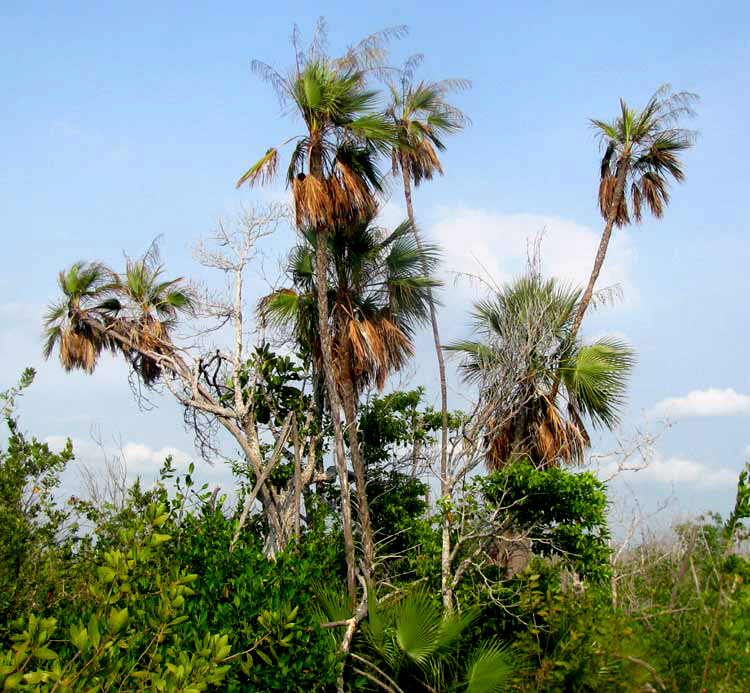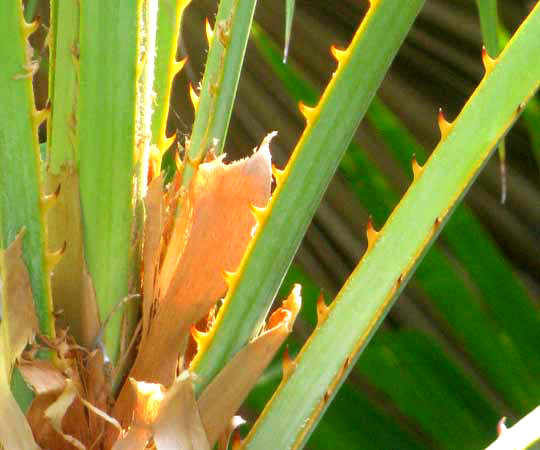Excerpts from Jim Conrad's
Naturalist Newsletter

from the May 22, 2011 Newsletter issued from Mayan Beach Garden Inn 20 kms north of Mahahual; Caribbean coastal beach and mangroves, ~N18.89°, ~W87.64°, Quintana Roo state, MÉXICO
PAUROTIS PALM
On the low, narrow sandy rise I now occupy between the sea on the east and a vast mangrove swamp to the west, so far I've found only two palm species, both of which are abundant. One is the Coconut Palm and the other is the Chit Palm, which we've nicely illustrated at www.backyardnature.net/yucatan/chitpalm.htm.
Entering the mangrove zone, which much of the year is flooded, you begin seeing a third palm species that at first glance is very similar to the Chit. It's shown above.
Up North this mangrove species is known as the Everglades Palm because it's the characteristic palm of southern Florida's Everglades. But that name won't do here, or in other parts of Mexico, Central America and the Caribbean where it also occurs. Other English names for it include Paurotis Palm, Madiera Palm and Silver Saw Palmetto. It's ACOELORRHAPHE WRIGHTII. Probably here Paurotis Palm is the best English name for the species.
Comparing Paurotis Palms with Chit Palms you might see that the main differences visible at a distance are that the Paurotis's trunks are more slender than most Chits. Also the Chit's fronds are divided into fewer and more flexible sections than the Paurotis's, whose divisions are finer and stiffer.
Also up close you see that Paurotis Palm petioles bear large, broad-based, forward-curving spines while Chits bear no spines. The Paurotis's petiole spines are seen below:

The Paurotises in the picture are sprouting old inflorescences, but they don't always have those. Paurotis Palms clump while Chit Palms may or may not.
In the mangroves, Paurotis Palms mostly occupy the edges, avoiding the most flooded areas. You could say that Chits favor sand, while Paurotis Palms go for mud, but not mud where water stands for too long.
Paurotis Palms are very much planted in the tropics and subtropics worldwide as ornamentals. In fact, many have been robbed from the Everglades for sale in the nursery trade.
Among palm lovers, certain stereotypes predict what kind of palm should appeal to what kind of people. "Paul, The Palm Doctor" on the Internet says, "If you associate royal palms with tuxedos and Washingtonias with three piece suites, the paurotis palm is tank top, cutoffs and sandals."